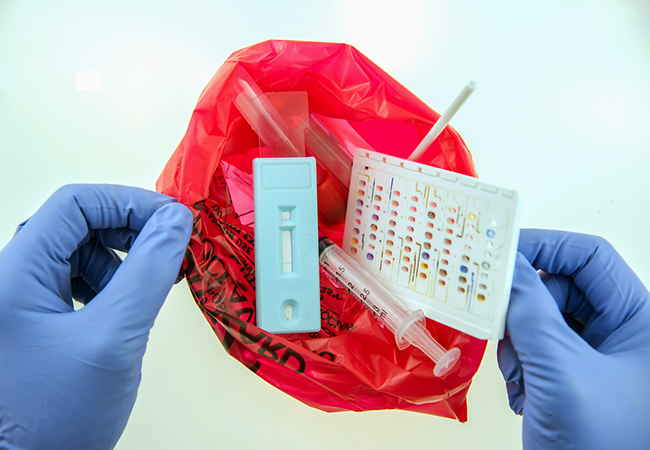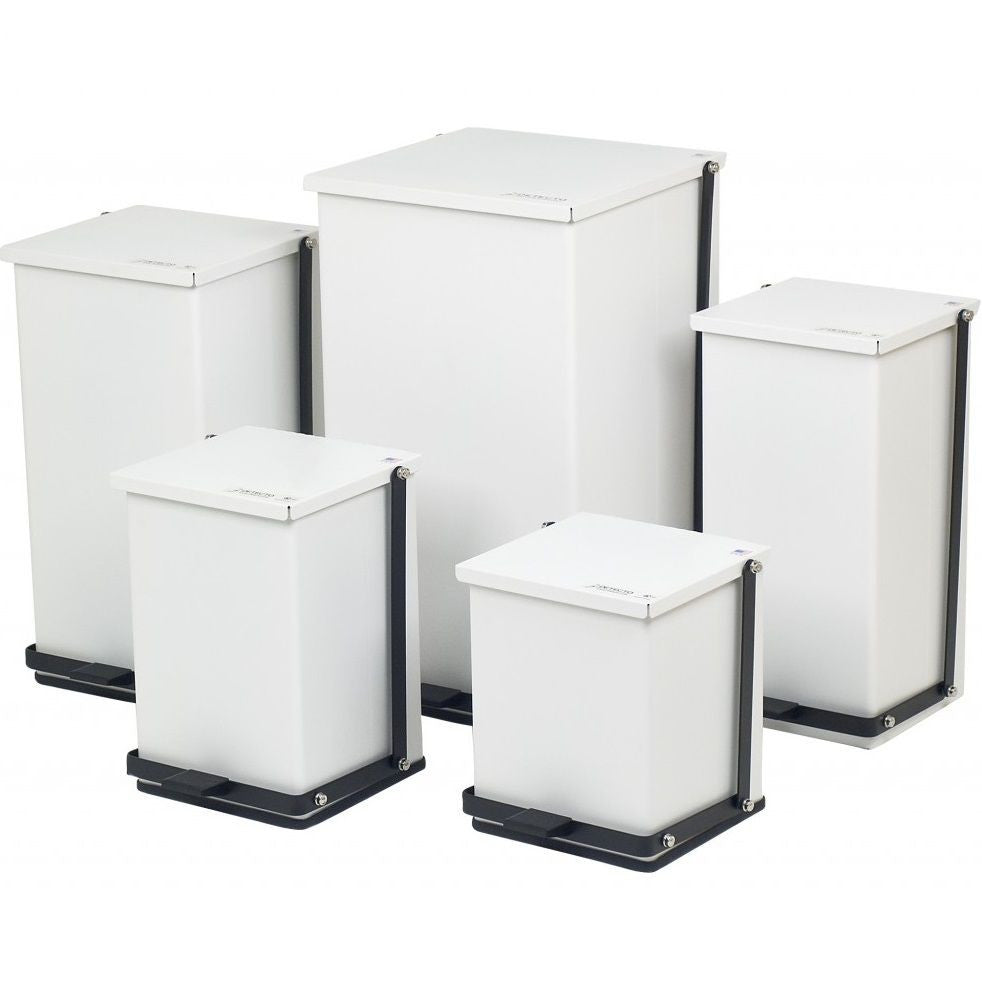Minimize Expenses and Take Full Advantage Of Safety And Security: Effective Medical Waste Disposal Techniques
Reliable medical waste disposal approaches are essential for health care centers to make the most of and minimize costs safety and security. With the growing worry for environmental sustainability and the raising variety of guidelines surrounding waste administration, it is vital for medical care organizations to embrace certified and effective techniques. By implementing correct segregation and classification, effective product packaging and labeling, safe transport and handling, efficient therapy and disposal techniques, and conformity with governing guidelines, health care centers can make certain the safe and accountable management of clinical waste. In this discussion, we will check out each of these strategies in detail, providing understandings and useful ideas for medical care specialists to maximize their waste disposal procedures.

Appropriate Partition and Categorization
Correct partition and classification are critical components of reliable medical garbage disposal methods, ensuring the safety of health care workers, the general public, and the setting - medical waste removal. medical waste disposal services with WasteX. By dividing different kinds of medical waste at the point of generation, medical care facilities can reduce the risk of cross-contamination and possible damage to communities and people
One of the crucial aspects in proper partition is the recognition and category of clinical waste. This involves categorizing waste right into various teams, such as contagious, dangerous, radioactive, or pharmaceutical waste. Each group needs details handling, storage, and disposal techniques to avoid any kind of damaging effects on human wellness and the environment.
In addition, correct segregation additionally consists of using color-coded containers and labels to clearly identify and separate the numerous types of medical waste. This assists healthcare workers and waste monitoring personnel to easily recognize and manage the waste suitably. Red containers may be made use of for transmittable waste, while yellow containers might be marked for harmful waste.
In addition to segregation, proper categorization additionally includes the proper packaging and containment of clinical waste. This makes certain that waste is securely stored and moved without positioning any type of dangers to people or the atmosphere. Making use of leak-proof and puncture-resistant containers, in addition to appropriately securing and identifying them, assists to stop any kind of unexpected direct exposure or release of harmful compounds.
Effective Product Packaging and Labeling
Effective product packaging and labeling play a vital role in ensuring the secure and efficient disposal of clinical waste. Proper packaging is vital to protect against leakage, damage, or spillage throughout transportation and handling. It helps to reduce the danger of contamination and safeguards health care workers, waste administration workers, and the atmosphere from prospective dangers.
Clinical waste should be packaged in durable and leak-proof containers that are immune to puncture and breakage. These containers need to be correctly secured to stop any leakage. In addition, the packaging needs to be able to stand up to the problems of transportation, consisting of temperature level variants and harsh handling.
Identifying is equally crucial as it offers essential information about the components of the waste and any type of potential dangers connected with it. The tags need to include the name of the medical care center, the type of waste, and any type of special delivery directions. Standard and clear labeling makes certain that waste management employees can quickly recognize and deal with the waste suitably.
Reliable product packaging and labeling likewise aid in the appropriate partition and classification of medical waste. Clear labeling permits easy recognition of various waste streams, such as transmittable waste, sharps, or pharmaceutical waste. This aids in simplifying the disposal procedure and making sure that the waste is dealt with or thrown away in conformity with regulative guidelines.
Safe Transport and Handling
Making certain the safe transport and handling of medical waste is of utmost relevance in order to prevent any kind of prospective wellness and ecological risks. Medical waste, such as sharps, polluted products, and pharmaceutical waste, must be effectively packaged and dealt with to lessen the threat of exposure to harmful compounds and pathogens.
Delivering medical waste needs compliance with rigorous policies and guidelines established by environmental companies and neighborhood authorities. These policies intend to protect the health and wellness of workers associated with medical waste disposal services with WasteX waste management and avoid the launch of unsafe materials right into the setting.
To make sure safe transportation, clinical waste needs to be positioned in puncture-resistant and watertight containers that are properly sealed and identified. These containers should be secured in a method that prevents spills or damage throughout transit (medical waste removal near me). Additionally, it is essential to make use of customized vehicles outfitted with suitable security attributes to move clinical waste. These lorries must have sufficient ventilation and be created to avoid leak or contamination.
Managing medical waste likewise requires appropriate training and adherence to safety protocols. Workers associated with the handling of clinical waste ought to use appropriate individual protective tools (PPE) such as dress, handwear covers, and masks to decrease the danger of direct exposure. They need to also comply with strict health practices to stop the spread of infections and guarantee the safe disposal of waste.
Reliable Therapy and Disposal Techniques
Applying proper therapy and disposal techniques is critical in taking care of clinical waste effectively and lessening prospective health and wellness and environmental threats. Clinical waste, that includes sharps, infectious products, chemicals, and pharmaceuticals, can present significant hazards if not handled and additional reading dealt with properly. There are numerous therapy and disposal approaches offered that comply with governing guidelines and promote secure techniques.
One common method is incineration, which involves melting the waste at heats. Incineration works in destroying virus and lowering the volume of waste, yet it can release hazardous contaminants into the air otherwise correctly managed. It is crucial to utilize contemporary burners equipped with exhaust control technologies.
Another method is autoclaving, which uses heavy steam and pressure to sterilize the waste. Autoclaving is reliable in killing pathogens and decreasing the volume of waste, yet it needs careful monitoring and upkeep to guarantee proper performance. The sterilized waste can after that be safely dealt with in a landfill.
Chemical therapy is another alternative, which entails using anti-bacterials or other chemicals to counteract microorganisms. This method is generally utilized for liquid waste, such as laboratory samplings. Nevertheless, it is very important to utilize appropriate chemicals and adhere to proper treatments to make sure effective treatment and stop ecological contamination.

Conformity With Regulatory Standards
Abiding by regulative guidelines is important in making certain correct compliance with clinical garbage disposal techniques. These guidelines are established to shield public health and wellness, stop ecological contamination, and maintain work environment safety and security. Conformity with governing standards is vital for healthcare click to read more facilities, as non-compliance can lead to charges, penalties, and reputational damages.
Regulatory guidelines detail the correct handling, storage space, transport, and disposal of medical waste. They offer certain guidelines on product packaging requirements, labeling, and record-keeping. These guidelines also address the segregation of various waste streams, such as sharps, contagious waste, and pharmaceutical waste. Medical care facilities should make certain that their waste administration practices align with these standards to minimize the risk of direct exposure to dangerous products and stop the spread of infections.
To maintain compliance, medical care centers ought to establish extensive waste administration programs that include staff training, normal audits, and ongoing monitoring. It is necessary to keep current with any updates or adjustments to regulatory guidelines, as methods might advance gradually. By staying notified and applying proper protocols, healthcare facilities can decrease the possibility for governing infractions and protect the health and wellness of their personnel, patients, and the bordering area.
Verdict
In conclusion, carrying out efficient clinical waste disposal approaches is important for lessening costs and making best use of security. Proper segregation and classification, reliable product packaging and labeling, safe transportation and handling, and reliable therapy and disposal methods are crucial actions to make certain conformity with governing guidelines. medical waste removal near me. By sticking to these techniques, health care centers can shield the environment and public health and wellness while additionally decreasing financial concerns connected with clinical waste monitoring
By executing appropriate partition and categorization, efficient product packaging and labeling, safe transportation and handling, reliable treatment and disposal methods, and compliance with governing standards, healthcare centers can ensure the liable and risk-free monitoring of clinical waste. Red containers may be utilized for contagious waste, while yellow containers may be marked for dangerous waste.
Clear and standard labeling guarantees that waste administration employees can quickly identify and manage the waste appropriately. (medical waste disposal services with WasteX)
Clear labeling allows for simple identification of various waste streams, such as contagious waste, sharps, or pharmaceutical waste. These guidelines also resolve the segregation of different waste streams, such as sharps, infectious waste, and pharmaceutical waste.